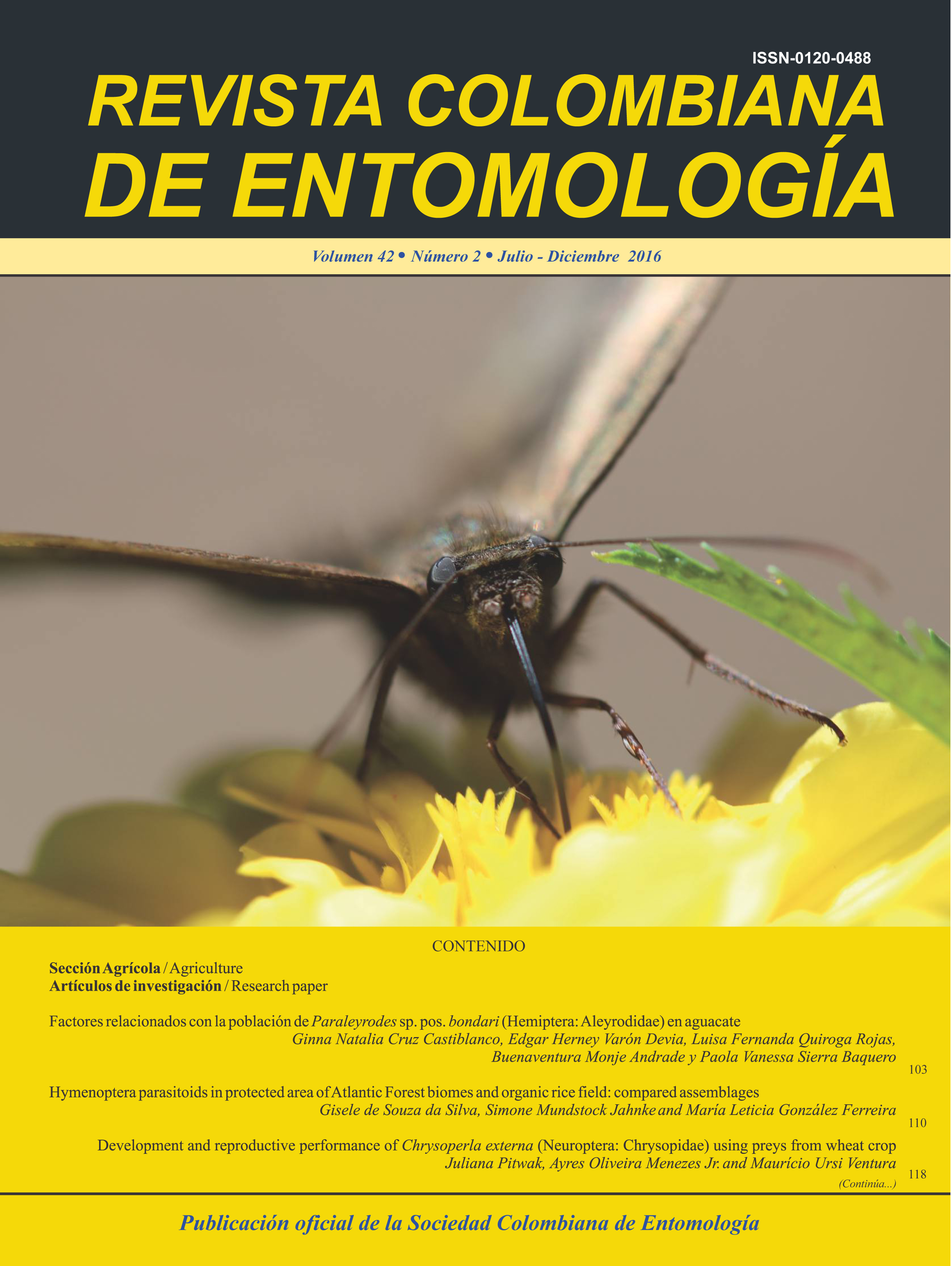Biological aspects of the guava’s bark borer Carmenta theobromae (Lepidoptera: Sesiidae) in Santander, Colombia
Keywords:
Length of the larval stage, Morphometric characteristics, Oviposition, SurvivalMain Article Content
The guava’s bark borer is a lepidopteran recently identified as Carmenta theobromae that has caused significant losses in guava crops of the Province of Velez, Santander. The objective of this research was to study egg and larval stages of the bark borer in the laboratory and field during the first semester of 2014. Oviposition sites were described in trees with damage in the field, while egg masses from guava bark were examined in the laboratory. Survival and length of larval stage of immatures collected in the field were evaluated in four semi-artificial diets: guava sawdust, two diets formulated for Spodoptera frugiperda and a diet for Synanthedon pictipes. Egg and larval morphometric characteristics were described from specimens collected in guava crops. Oviposition sites were found mainly in stem barks where the egg masses were simple, spaced and oblong and ellipsoidal shape. No statistical differences were found among treatments for survival and length of the larval stage. The average length of the larval stage was 13.92 ± 1.36 days for individuals with a length greater than a 10.63 ± 0.31 mm. The egg measured 0.22 ± 0.012 mm wide and 0.37 ± 0.011 mm long. Four larval stages were identified through Dyar’s coefficient and the frequency distribution of head capsule width measurements. Crochets of mature larvae were uniordinal and the pronotum had a pair of bands as C. theobromae, cacao borer in Venezuela.
Downloads

This work is licensed under a Creative Commons Attribution-NonCommercial-ShareAlike 4.0 International License.
Authors retain the copyright on their work and are responsible for the ideas expressed in them. Once a manuscript is approved for publication, authors are asked for a publication license for the term of legal protection, for all territories that allows the use, dissemination and disclosure of the same.

